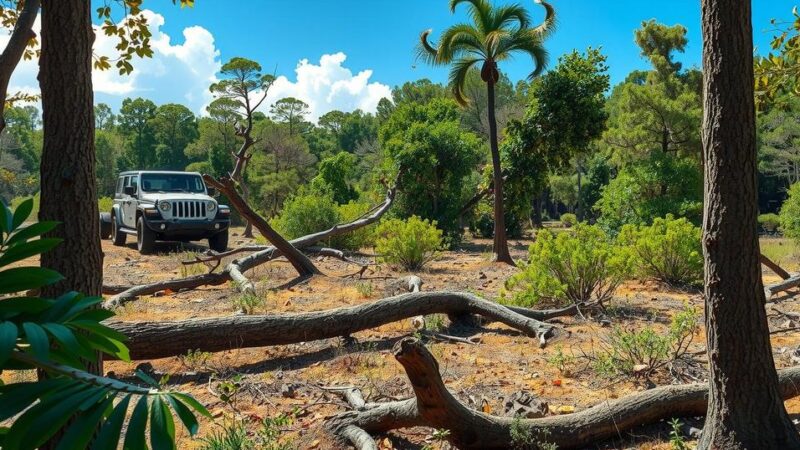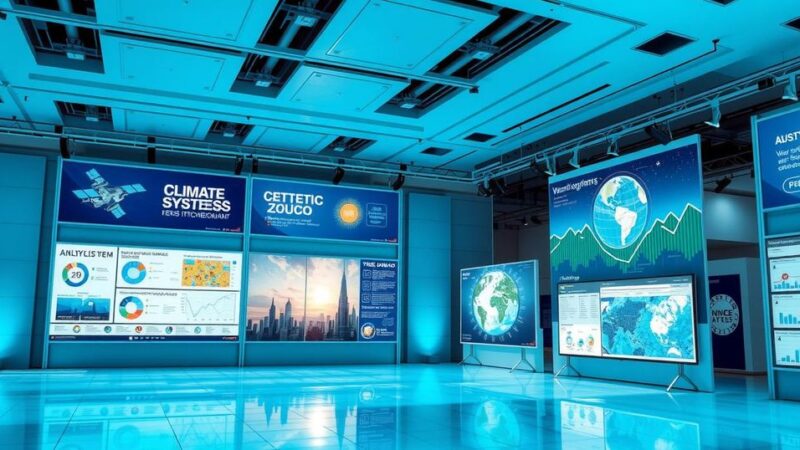A severe drought is causing historically low water levels on the Paraguay River, disrupting commerce and impacting livelihoods. The river, which is vital for Paraguay’s economy, now sees shipping capacity severely limited, and thousands of fishermen face job losses. Experts highlight this situation as part of a broader trend linked to climate change and unsustainable practices, affecting various countries reliant on this crucial waterway.
A significant drought in the Amazon rainforest has led to the lowest recorded water levels in the Paraguay River in over a century, causing impediments to commerce and transportation. According to Paraguay’s Department of Meteorology and Hydrology, the river’s water levels fell 89 centimeters (35 inches) below the benchmark at the capital port of Asunción, marking the most severe drop in 120 years. The previous record low occurred just three years ago, indicating the increasing frequency and severity of droughts in the region.
This development severely impacts Paraguay, which depends on the Paraguay River for 80% of its international trade as one of the top agricultural exporters worldwide. The head of the fishing union reported that 1,600 fishermen have lost their jobs due to the lowered water levels. Many boats, usually active on the river, are now stranded along the dry riverbanks, exemplifying the situation’s severity.
The Paraguay-Paraná waterway, which stretches 3,400 kilometers (approximately 2,110 miles), connects multiple countries and serves as a crucial transport route for various agricultural goods. As a result of the drought, over half of the river’s shipping capacity has encountered disruptions, inflicting delays and raising costs for countries like Brazil and Bolivia, which rely on this waterway for exporting iron ore and transporting fuel, respectively.
In light of the ongoing drought, relief seems distant, with industry experts estimating financial losses in the hundreds of millions of dollars. Raúl Valdez, president of Paraguay’s Center of River and Maritime Shipowners, expressed concerns about the potential long-term patterns of drought, noting, “No one is expecting a quick recovery.” This situation reflects broader trends of increasing droughts worldwide, influenced by climate change and poor resource management.
The escalating dryness of the Paraguay River highlights the impacts of climate change, population growth, and inefficient agricultural practices. Rachael McDonnell, deputy director-general for research at the International Water Management Institute, noted, “we’ve lost the slack in the system,” as prolonged droughts become more frequent and intense. Additionally, it is estimated that this drought has contributed to severe wildfires in the Amazon, triggering national emergencies in affected areas such as Bolivia.
Overall, the current drought has revealed the vulnerabilities of hydro-dependent economies, while also underscoring the urgent need for effective environmental management to address these growing challenges.
In summary, the historic drought impacting the Paraguay River serves as a critical warning of the increasing frequency and intensity of environmental changes driven by climate factors. The adverse effects on commerce, agriculture, and local livelihoods underscore the urgent need for adaptive measures and sustainable governance to mitigate such crises. As drought conditions persist, the region must confront the reality of potential long-term drought patterns and implement strategies to prepare for the inevitable impacts on infrastructure and ecosystems.
Original Source: bgdailynews.com






